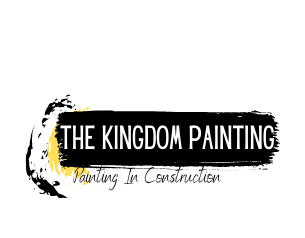A painter is an artist who uses brushstrokes to create a picture. They use various colors and varying textures to achieve the desired result. They also need to be able to solve problems as they arise.
Painters In Delaware offers many benefits to those who engage in it as a hobby. These benefits include:

It is believed that painters have an enhanced ability to remember visual information. This could result from the fact that creating art requires an individual to process information visually, kinesthetically, and semantically. It has been found that people who paint have better memory recollection abilities than those who do not, even in their old age. This is because art helps a person to flex the creative muscles in their brain, which can help prevent degenerative cognitive conditions.
Moreover, painters tend to develop a good understanding of the moods and feelings that they experience. For this reason, they can communicate and express themselves through their art. This may also lead to emotional growth for an individual.
Aside from this, painting enables an individual to learn the technique of problem-solving. It makes them realize that there is more than one way to solve a problem, which can be useful in everyday life.
Additionally, painting has been known to reduce stress levels. This is because it helps individuals unwind and release the mental strain they are exposed to daily. As a result, they can live a healthier lifestyle and improve their overall health.
Often, painting can be used as a way to express emotions. This can be especially true for those who paint to commemorate a particular event or time. For example, a person who has recently lost a loved one might celebrate the event with a portrait of the loved one. In addition to allowing people to record their emotions, painting can be therapeutic, allowing individuals to process and regulate their feelings healthily.
The idea that artworks express the artist’s emotions is an idea that became popular with romanticism in the early 19th century. This theory is not without its problems, however. For example, some philosophers have argued that it is not possible to determine the exact cause of a painting’s expressiveness. They also say that it is impossible to determine whether a painting accurately represents reality.
One of the more common alternatives to the idea that art expresses emotions is that it evokes and represents certain emotions independent of the artist’s. This argument is based on the fact that a work of art has particular features, such as movement, lines, colors, sounds, or words, correlated with a specific emotion.
Painting is a great way for individuals to express their emotions. Many people find it difficult to open up in a social setting, but using art to tell a story lets them overcome this shyness. Individuals who paint also use it to capture their inner feelings and convey their personality. This helps them overcome their normal social reservations and improves their social skills.
A recent study shows that painting increases emotional intelligence by helping people recognize and understand their and others’ emotions. It also promotes empathy and compassion. The study also found that people who frequently participate in creative activities like painting are less likely to develop memory loss illnesses, such as Alzheimer’s and dementia, as they age.
Another benefit of being a painter is that it saves money on a university or college degree. Instead of being weighed down by thousands of dollars in student loans, becoming a painter lets you jump into your career and start making money immediately. You can even create your own business and work for yourself, which is more secure than being employed by a corporation. This means you’ll have a flexible schedule and can paint when you want to, rather than being stuck working 9 am-5 pm as other people do in office jobs.
Whether viewing or creating art, people who participate in artistic activities experience happiness and well-being. This is because arts and culture promote a positive mindset, which helps to combat stress and pain. In addition, they enhance our environment by bringing beauty and inspiration to the people around us.
Artistic endeavors, including painting, help to sharpen the mind through conceptual visualization and planning. This is important because it reduces the chances of a person developing memory loss illnesses, such as Alzheimer’s and dementia, in the future.
Professional painters must also have excellent customer service skills to keep their clients happy. This involves communicating with customers throughout the project and responding to questions or concerns. They should be able to complete projects on time and provide accurate estimates.
They should also be able to mask and protect furniture, cars, and windows from paint and spray. Additionally, they should be able to cover concrete and pavers to prevent them from getting wet. Finally, they should be able to handle all the tools necessary for their job and understand how to use them properly. The better a painter holds their tools and understands the process, the more successful they will be as artists.
Painting isn’t just for art lovers — it can also be used to improve mental health. This helps boost memory recollection skills and sharpen the mind through conceptual visualization and implementation. It can even help individuals who are shy to let go of their normal social reservations. Individuals who paint often report feeling less stress and depression. In addition, they have a lower risk of developing memory loss illnesses like dementia and Alzheimer’s.
In addition, painting is a great way to develop empathy. As you learn to express your emotions through painting, you will also be able to understand and interpret the feelings that others say in their paintings. This can help you better empathize with others and build a strong community.
Creating a painting requires constantly deciding which color to mix or how to apply the paint. This can also help you improve your problem-solving skills. In addition, when you finish a painting, it can provide a sense of pride and accomplishment. This can help you build confidence in your abilities and increase your self-esteem.
Painting involves manipulating tools to create intricate designs, so it’s no surprise that it improves fine motor skills. It’s a form of movement that trains the brain and hands to work together, and the hand-eye coordination it develops is critical for future academic tasks like writing.
The process of creating art also encourages creative thinking. As a painter, you must think conceptually to bring multiple solutions to life while overcoming challenges like color limitations or unexpected outcomes during artistic implementation. This critical-thinking ability builds problem-solving skills, which are essential in many professions.
Additionally, painters learn to control their movements and work with different textures, which enhances tactile perception, which is the ability to feel other surfaces and materials. Tactile perception is important for kids to explore as they grow, and it can help them develop their imagination and creativity. It can even boost their emotional intelligence and empathy. Lastly, some researchers have found that people who paint regularly are at a lower risk of developing memory loss illnesses like dementia or Alzheimer’s as they age. This is likely because art and painting promote cognitive growth and are effective stress relievers.
When you are engaged in something as enthralling as painting, the world around you seems to melt away. The focus is entirely on the creative process, and that’s an amazing way to relieve stress. Then, when you finish your masterpiece, you can see that the hard work paid off, and that’s even better.
You can do this at home with an easy paint-by-numbers kit or even real licensed artwork. You can also try a new painting technique you’ve never tried before, which is a great way to challenge your brain and boost creativity. Just make sure that you take the time to enjoy it.
Some painters may work in art institutions or studios, which can be an excellent place to focus on your project and relieve stress. Others may work on commissioned projects that require them to travel and work on-site. Regardless of where you work, painting is a great way to reduce stress levels and improve mental health. Try it out today and let your inner artist come out!


